1. Faculty
1.1. Context
1.1.1. Personal Background
1.1.1.1. Race / Ethnicity
1.1.1.2. Sex / Gender
1.1.1.2.1. Male
1.1.1.2.2. Female
1.1.1.2.3. Nonbinary
1.1.1.2.4. Transgender
1.1.1.3. Sexual Identity
1.1.1.3.1. Heterosexual
1.1.1.3.2. Non-heterosexual
1.1.1.4. Personal Identity
1.1.1.4.1. Religious Identity
1.1.1.4.2. Community involvement
1.1.1.4.3. Political identity
1.1.2. Experience
1.1.2.1. Teaching Experience
1.1.2.1.1. Experienced
1.1.2.1.2. Inexperienced
1.1.2.2. Mentoring Experience
1.1.2.2.1. Experienced
1.1.2.2.2. Inexperienced
1.1.2.3. Specialty / Subdiscipline
1.1.2.3.1. Educational Experiences
1.1.2.3.2. Undergraduate Research Experiences
1.1.2.4. Work Experience
1.1.2.4.1. Nontraditional student
1.1.2.4.2. Affiliated with education
1.1.3. Teaching Philosophy
1.1.3.1. Mindset
1.1.3.1.1. Fixed Mindset
1.1.3.1.2. Growth Mindset
1.1.3.2. Teaching Strategy
1.1.3.2.1. Active Learning
1.1.3.2.2. Passive Learning
1.1.3.3. Mentoring Philosophy
1.1.4. Social Support Network
1.1.4.1. Local
1.1.4.1.1. Institution
1.1.4.1.2. Outside Institution
1.1.5. Department
1.1.5.1. Culture & Values
1.1.5.1.1. Colleagues' attitudes / perceptions
1.1.5.1.2. Professional Development
1.1.5.2. Peer Support Network
1.1.5.3. Position
1.1.5.3.1. Tenure Track
1.1.5.3.2. Non-tenure Track
1.1.5.4. Funding
1.1.5.5. Workload Distribution
1.1.5.6. Incentives
1.1.5.6.1. Social
1.1.5.6.2. Career
1.1.5.7. Colleagues
1.1.5.7.1. Political Climate
1.1.5.7.2. Peer Support Network
1.1.5.8. Supervisors
1.1.5.8.1. Political Climate
1.1.5.8.2. Management Style
1.1.6. Workload
1.1.6.1. Teaching
1.1.6.2. Research
1.1.6.3. Service Obligations
1.1.6.4. Continuing Education
1.1.6.5. Professional Development
1.1.7. Career Goals
1.1.7.1. Tenure Track
1.1.7.2. Non-tenure Track
1.1.7.3. Length of time at institution
2. Students
2.1. Preparedness
2.1.1. Class Level
2.1.1.1. Freshman
2.1.1.2. Sophomore
2.1.1.3. Junior
2.1.1.4. Senior
2.2. Socioeconomic
2.2.1. Income / Class
2.2.1.1. Lower
2.2.1.2. Middle
2.2.1.3. Upper
2.2.2. Education
2.2.3. Support Network
2.2.4. Student Profile
2.2.4.1. Traditional
2.2.4.2. Non-traditional
2.2.4.3. First-generation
2.2.4.4. Transfer
2.2.4.5. Dual enrollment
2.2.4.6. Military
2.2.4.6.1. Active duty
2.2.4.6.2. Reserve / Guard
2.2.4.6.3. Veteran
2.2.5. Race
2.2.5.1. URM
2.2.5.2. Majority
2.2.6. Gender
2.2.6.1. Male
2.2.6.2. Female
2.2.6.3. Nonbinary
2.2.6.4. Transgender
2.2.7. Sexuality
2.2.7.1. Heterosexual
2.2.7.2. Non-heterosexual
2.3. Attitude
2.3.1. Motivation
2.3.2. Perception
3. Experience during Implementation of CURE
3.1. Institution
3.1.1. Department
3.1.1.1. Colleague Interactions
3.1.1.1.1. Supportive
3.1.1.1.2. Neutral
3.1.1.1.3. Non-supportive
3.1.2. Other Departments
3.1.2.1. Colleague Interactions
3.1.2.1.1. Supportive
3.1.2.1.2. Neutral
3.1.2.1.3. Non-supportive
3.2. Student
3.2.1. Interactions
3.2.1.1. Positive
3.2.1.2. Neutral
3.2.1.3. Negative
3.2.2. Outcomes
3.2.2.1. Knowledge Gains
3.2.2.2. Skill Gains
3.2.2.3. Perceived Gains
3.2.3. Perceptions
3.2.3.1. Positive
3.2.3.2. Neutral
3.2.3.3. Negative
3.3. Teaching
3.3.1. Time Burden
3.3.1.1. Intensive
3.3.1.2. Same
3.3.1.3. Non-intensive
4. Institution
4.1. Federal policy
4.2. State policy
4.3. Regional accreditation
4.4. Culture
4.4.1. Institutional Values / Mission Statement
4.4.2. Mission statement
4.4.3. Community
4.4.4. Population served
4.4.4.1. Demographics
4.4.4.1.1. Non-URM
4.4.4.1.2. HBCU / URM
4.4.4.1.3. Mixed
4.4.4.2. Military
4.4.5. Administration culture
4.5. Carnegie Classification
4.5.1. Doctoral
4.5.1.1. R1
4.5.1.2. R2
4.5.1.3. D/PU
4.5.2. Master's
4.5.2.1. M1
4.5.2.2. M2
4.5.2.3. M3
4.5.3. Baccalaureate
4.5.3.1. Liberal Arts
4.5.3.2. Science
4.5.4. Baccalaureate / Associates
4.5.4.1. Mixed
4.5.4.2. Associate's Dominant
4.5.5. Associate's
4.5.5.1. High transfer
4.5.5.1.1. High traditional
4.5.5.1.2. Mixed traditional & nontraditional
4.5.5.1.3. Nontraditional
4.5.5.2. Mixed transfer / career & technical
4.5.5.2.1. High traditional
4.5.5.2.2. Mixed traditional & nontraditional
4.5.5.2.3. High nontraditional
4.5.5.3. High career & technical
4.5.5.3.1. High traditional
4.5.5.3.2. Mixed traditional & nontraditional
4.5.5.3.3. High nontraditional
4.5.6. Special Focus
4.5.6.1. Two Year
4.5.6.1.1. Health professions
4.5.6.1.2. Technical professions
4.5.6.1.3. Arts & design
4.5.6.1.4. Other fields
4.5.6.2. Four Year
4.5.6.2.1. Faith-related
4.5.6.2.2. Medical schools & centers
4.5.6.2.3. Other health profession schools
4.5.6.2.4. Engineering schools
4.5.6.2.5. Other technology-related schools
4.5.6.2.6. Arts, music, & design schools
4.5.6.2.7. Law schools
4.5.6.2.8. Other special focus institutions
4.5.7. Tribal Colleges
